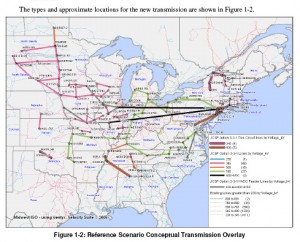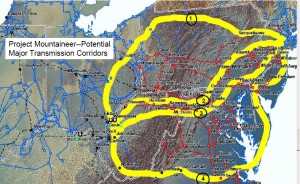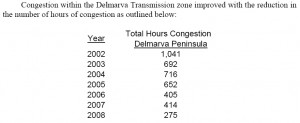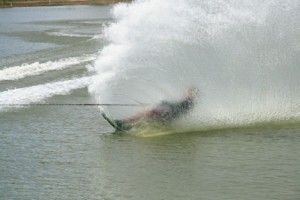Offshore transmission, NOT transmission from Midwest
December 6th, 2009
By standing up for offshore transmission for wind, Delaware’s Gov. Jack Markell stands up to Midwest coal!
The Mid-Atlantic states have been standing up and opposing transmission from the Midwest. They’ve gone on record in a number of venues, and in their opposition are citing Midwest transmission promoters’ disregard for eastern renewable efforts, that xmsn may well not be an economical way to get power to the east, and that THEY KNOW THAT MIDWEST TRANSMISSION PLANS INHERENTLY ARE ABOUT COAL. The plan they’re referring to is a massive transmission buildout known as JCSP, and it also applies to the big PJM buildout that includes the PA-NJ Susquehanna-Roseland transmission line that was the subject of a hearing last month.
Here’s JCSP (Joint Coordinated System Plan) note their site now talks about wind — but look where the transmission starts, DUH! The coal fields of the Dakotas:
Gotta give them, Delaware, Maryland and Virginia, a lot of credit for recognizing and stating what Midwest states have been unwilling to admit.
That said, here’s what Mid-Atlantic states are doing — they’re banding together to propose offshore transmission. If it’s underwater offshore transmission, that’s an idea that’s hard not to like. But I’ll bet it throws PJM for a loop, what with all their “backbone” transmission schemes, a la Project Mountaineer, that are in the works:
The FERC birth of Project Mountaineer:
And you can see that those lines in play now, PJM’s “backbone” transmission projects like Susquehanna-Roseland (NE part of Project Mountaineer Line 1) and MAPP (NE part of Project Mountaineer Line 4) are part of the plan… the big transmission plan that does not work for the east coast.
Here’s the Memorandum of Understanding between Delaware, Maryland and Virginia:
And recently, Gov. Jack Markell addressed these issues before American Wind Energy Association’s offshore windfest — but given the PJM big-transmission-projects-from-hell are referred to as “backbone” projects, I wish they’d find another term:
Delaware energy: ‘Backbone’ power line pushed for wind farms
By AARON NATHANS
The News JournalGov. Jack Markell broached the subject this week in his address to the American Wind Energy Association’s offshore wind workshop, the industry event of the year on this side of the Atlantic. Markell signed onto letters the governors sent to members of Congress this summer, and the Federal Energy Regulatory Commission last month.
“Let’s have the conversation,” O’Mara said. “It’s extremely worthy of further study.”
“It obviously won’t happen in the absence of federal leadership,” he said.
Fishermen’s Energy President Daniel Cohen said it’s a good idea, but “it’s another moving part.”
The benefits of building lines transmitting wind power from the Midwest are less certain, he said.
“It will be difficult to get progress in this area until there are clear national goals,” he said.
Note that “cost allocation” is raised. Since the 7th Circuit decision tossing out FERC approval of PJM’s transmission cost allocation dream/nightmare, all transmission projects 500kV and over based on that cost allocation scheme are in limbo.
So as noted, who pays, and submarine transmission is EXPENSIVE, is THE big issue now. It’s the big issue for land transmission, it’s the big issue for offshore transmission, and, given the uncertainty since the 7th Circuit decision, maybe some of the sturm and drang could be circumvented if it’s designed at 345kV or below, and uses the “benefactor pays” theory. We shall see…
How far down does electrical demand have to go…
November 23rd, 2009
… before they back off on these stupid infrastructure projects?
We finished up the Susquehanna-Roseland hearing today, Stop the Lines has weighed in. Time to say goodbye to beautiful downtown Newark.
For me, the best parts today were:
1) Finally… FINALLY… getting some credible testimony about the capacity of that line. Let’s see, they’re planning to double circuit it with 500kV, getting rid of the 230kV, but when… and they’ve designed the substations for 500kV expansion. So DUH! Here’s the poop:
140C for a 1590 ACSR Falcon @ 500kV – PJM summer normal rating conditions = 1838 amps
4 conductors = 7,352 amps
3 conductors – 5,514 amps or 4,595 MVA
2) Clear statement on the record about the Merchant Transmission’s Firm Transmission Withdrawal Rights:
Neptune 685MW
ECP 330 MW (VFT?)
HTP 670MW
TOTAL: 1,670 MW already heading across the river
And getting those numbers in was not easy, PSEG did NOT want this in the record. It’s confirmed in the PJM Tariff, STL-12, p. 3 of the exhibit, p. 2 of SRTT-114 (BPU Staff IR). But there’s something else disturbing going on here. We were supposed to question Essam Khadr about “Leakage,” which is “New Jerseyian” for the increased coal generation that will be imported if CO2 costs are assessed:
That will take some time to wrap my head around.
Here’s PJM’s 3Q bad news, well… good news to me! Because it continues to go down:
And if that’s not enough, here’s the Wall Street Journal:
Weak Power Demand Dims Outlook
Newark state of mind…
November 15th, 2009
Yup, close, but decidedly Newark, New Jersey. It’s more Alan’s country, he was born just south of here in Elizabeth, maybe the old Elizabeth General Medical Center I drove by???
And a hearing state of mind too, ready to kick in tomorrow. Hearing — Susquehanna-Roseland transmission at the New Jersey Board of Public Utilities. Stop the Lines! Stay tuned for reports from the trenches…
Coalition files Motion to Dismiss
November 6th, 2009
Our coalition of the “Municipal Intervenors,” Stop the Lines! and “Environmental Intervenors” has filed a Motion to Dismiss in PSEG’s Susquehanna-Roseland proceeding in New Jersey.
Here it is – enjoy!
Nutshell version:
NO!
… ahem… really, it’s that simple!
The hearing is set to begin on the Monday after next, November 16th, and we’re having a phone conference next Monday. They ought to just toss it out, and tell them to come back when they’ve really got something. I kinda feel sorry for PSEG, because they’re having to carry the water here when it’s not even their project. PJM’s the one that should be in the hot seat.
So another utility toady thinks I’ve got my head implanted…
October 4th, 2009
.
Apparently Jonathan Travers, “Engineer of Knowledge” is another utility toady or self-declared energy wonk, and thinks I’ve got my head implanted regarding my comments about the MAPP line and about PSE&G’s dissing Midwest transmission. EH? I’d say my Google Analyics stats say otherwise. And then there’s the little energy birdie who admitted the other day that Legalectric is one of his first stops in the morning!
Who is Jonathan Travers? Haven’t a clue, his reputation does not exceed him! Google’s got very little to say. Hmmmmmmm… There is a “Travers” on the Dorchester County Council, Ricky Travers. This “Jonathan Travers,” he’s got a blog, Jonathan Travers Chronicles, with only a handful of postings that are focused on blasting opposition to the Mid-Atlantic Power Pathway (MAPP) transmission line, i.e., Dorchester County’s Dorchester Citizens for Safe Energy and Eastern Shore Land Conservancy, who are having some success in fighting the MAPP line, and though Travers’ blog’s banner states “Debate Through Logical Argumentation Only. Not For Flamers!” the level of discourse he’s posting is not even up to “Horse’s Ass Awards” and such:
Here are his comments about my MAPP post, “MAPP Transmission Line Under the Microscope” a couple weeks ago:
Submitted on 2009/10/04 at 9:18amTo the attention of Legalectric Blog.
You make the statement, “this transmission line is not needed.” Per logical argumentation, you make (sic) no backup facts to support this opening statement. As any English writing course teaches, this is just poor writing skills (sic). As it has been (sic) well documented by “The Public Service Commission” report (sic) released last December (sic) warned that the state could experience rolling blackouts as early as 2011 to helped (sic… really!) people understand the reason for MAPP’s conception. So with just your opening statement, you have negated your argument and quite poorly I might add (how “sic” can it be?).
Overland comments: “backup facts” about transmission line not needed can be found by searching this site for “decreased demand” and “PJM annual report” and PJM Load Capability. Ummmm, Hello, I’m a writing major, and your comment about “poor writing skills” isn’t about writing, it’s about evidence that you want. Don’t worry, it’s there, just look! “Rolling blackouts” is hysteria, blown away by DEC’s annual Energy Plan, showing sharply decreased congestion on the Delmarva peninsula:
You then go on to post the article from the Star Democrat written by Dustin Holt who may have a journalistic degree but by his statements he has no knowledge of electrical engineering. I have spoken with Mr. Holt in the past and within a short amount of conversation, it was quite apparent that he did not even have the basic understanding of what he was writing about. Mr. Holt starts off by referencing statements from Libby Nagel who has self proclaimed herself (sic) president of the Dorchester Citizens for Safe Energy. It is my evaluation that with her lack of electrical engineering knowledge, Ms. Nagel would be better off proclaiming herself President of the Dorchester’s chapter of the Mickey Mouse Club (SIC!). So once again you have quoted a source that does not have adequate credential (sic) to even be speaking on the subject negating your argument again.Overland comments: I posted the article as a good example of on-the-ground activism, where people work to increase awareness of their issue, and Dorchester Citizens for Safe Energy did a great job! They got press coverage, their elected officials showed up, and pro-MAPP people are flailing wildly — that’s a measure of success! Libby IS, not was, the President, and IS self-DESCRIBED President, she was elected President by the organization, it’s “described’ not “proclaimed.” Your “evaluation” is really immaterial. Ms. Nagel has all the “credential” necessary to speak as an affected community member and President of the primary opposition organization. The article I posted says she’s the “Chairman,” and not “President.” Really!
Let me try to explain it this way. If you run just one transmission route like Ms. Nagel is stating would be (sic) like having one extension cord with a hundred electrical appliances, tools, etc. plugged into it. It will not be long before you have overloaded the circuit causing a short circuit or even causing a fire. It is the diversification that the multiple routes provide so that the electrical load required by the Delmarva Peninsula (sic) is what makes the electrical grid secure and stable.
Overland comments: This is such convoluted and tortured writing that it’s hard to tell where to put the “sic” parentheticals in. WHEW! Anyway, back to “substance.” WTF? I see only one reference to Ms. Nagel in the article, “Dorchester Citizens for Safe Energy Chairman Libby Nagel said the power line would require about a 200-foot right-of-way.” Nowhere in this article is Nagel advocating for “just one transmission route,” and I don’t think Nagle advocates for ANY transmission route, she’s stating that a new transmission line is not needed!
I would suggest that your readers can get the correct and accurate arguments with regards to MAPP at my site http://www.jonathantraverschronicles.blogspot.com/
Overland comment: I would suggest that my readers check out the site and comment away!!! Have at it. My readers will be able to easily dissect that site.
Good day,
Jonathan Travers
Oh, he’s not THAT Jon Travers???
OK, now on to his next comment, on the “PSEG’s Izzo disses Midwest Transmission” post :
Submitted on 2009/10/04 at 2:54pmTo the attention of Legalectric Blog.
In your earlier posting you made the statement, “PJM, the private utility transmission promotion entity, has admitted that the Indian River to Salem part of the line is not justified, and have taken it off their wish list.”
Counter Point:
To start off with PJM simply stands for Pennsylvania, New Jersey, and Maryland and the state of Delaware has now (sic?) been included since its conception. PJM is an oversight committee (EH?) made up of knowledgeable people in the industry but they do not tell power utilities to build anything (EH?). It is the utilities (sic) to come up with their own plan to address the problem of the soon (sic) lack of electrical power for their regions. Again your statement you are passing on are (sic) incorrect(sic) negating you (sic) argument.Overland comment: PJM is more than a committee, it’s a formal business organization. PJM IS the utilities, and per PSE&G testimony in the Susquehanna-Roseland case, PJM is telling them to build the line. Now obviously PJM has no authority, but if they press the matter with FERC, FERC could direct the utilities to build it. It’s much more than an “oversight” committee, it’s an organization that is comprised of utilities, and they not only address electric reliability issues, but they control and manipulate the electric market. “Lack of electrical power?” Somebody hasn’t been reading the SEC filings, reserve margins, and annual reports, EARTH TO MARS, there’s a substantial decrease in electrical use and need, we aren’t going to have a power shortage. Project Mountaineer is not a plan of the individual utilities’ making. JCSP is not a plan of individual utilities, CapX is not a plan of individual utilities…
“A little knowledge is a very dangerous thing,” and the writer of this blog has demonstrated their sever (sic) lack of knowledge in this subject by the statements presented.”
Overland comment: Oh, uh-huh…
Now with this posting they are stating their case as if there is only one transmission line that needs to be considered. For those educated in electrical engineering, it is plain that the writer of this blog does not even have the basic understanding of Ohms Law. What MAPP is offering are multiple access points for electrical transmission routes.
Overland comment: Ummmmm, “they?” And who is advocating for transmission? This is the same thing that “Travers” says about Nagel, who said nothing of the sort. This mantra does not fly. Multiple access points? For what generation? Let’s get clear about that…
For anyone else whom (sic) should (sic) like to inform themselves more proficiently on this subject, I suggest you go to http://www.jonathantraverschronicles.blogspot.com/ where this has all been address (sic) before.
Thank you,
Jonathan Travers************************************
Overland comment: Whoever wrote this is clearly not a native speaker/writer nor in any position to critique writing. Content, well, anyone can criticize content, but I’d guess that “Travers” is a retired engineer or a newly imported engineer who has not had experience with the capitalist system and the shift of focus of PJM, MISO, etc., to economic dispatch, a market system, where economic considerations are primary, and where the game in transmission is how to build out as much as possible while shifting cost-allocation elsewhere, for someone else to pay, anyone. Then PJM gets shot down by the 7th Circuit and all their transmission cost apportionment plans are in limbo.










